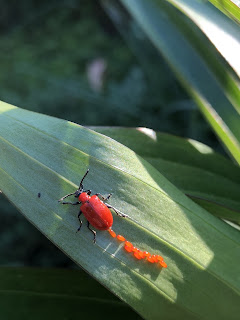Laura Butler
Washington State Aquaculture Coordinator
 |
Thousands of juvenile black cod fish swirl in a tank at NOAA's research
facility at Manchester. |
In a collaboration that exemplifies the Northwest’s fusion of cultures, innovation, and entrepreneurial
spirit, the Olympic Peninsula’s Jamestown S’Klallam tribe is working with the National Oceanic and Atmospheric Administration (NOAA) researchers, Washington Sea Grant, and the University of Washington to develop a revolutionary new fish farm.
The remarkable if unlikely star of the whole venture? A lugubrious native fish the S’Klallam people have prized for more than a millennium, the black cod.
Kurt Grinnell, the tribe’s Aquaculture Program manager, met us at the NOAA research facility at Manchester to give us an early look at the project he believes will make a big splash for his community and our state’s finfish farming industry.
 |
| Kurt Grinnell has high hopes for farming black cod. |
Grinnell said one of the reasons black cod (also known as sablefish) has so much potential for aquaculture is its great taste – and its natural vigor helps, too.
“It’s a real robust fish,” Grinnell said. ”As far as farming goes, it can handle low oxygen levels and algal blooms, and it grows fast. We have an all-female population here, so we can grow it in about 18 to 24 months.”
In addition, black cod has a strong cultural significance to the tribe, he said.
"Ever since we’ve been here, we’ve been eating them,"
Kurt Grinnell – Jamestown S’Klallam Tribal Member
“The S’Klallams have always caught sablefish right there in the Strait of Juan de Fuca, so as a tribe, we’ve always eaten them,” Grinnell said. “It’s always been a native local fish for us going back thousands of years.”
Today, high-end chefs around the world, and especially in the Pacific Rim, prepare black cod with all manner of culinary magic. The flesh has a flakey texture and high oil content that makes it versatile, forgiving, and flavorful. You might see it in dishes such as “Miso Glazed Cod” – a recipe that
literally made a name for an internationally renowned restaurant.
Grinnell says the ancient people were more unassuming.
“As far as the way we were preparing it, I would say it was probably cooked right over a fire, boiled or smoked. In those remote areas, that’s what we had. We could boil water or could start a fire,” Grinnell said.
Economically, we think it’s going to be a viable fish for the market, we know it’s popular enough that people will buy it. It will definitely help the tribe in that way. It will pay for programs and things like that. But it’s culturally significant too,” Grinnell said.
Cutting-edge science
Also on hand was Rick Goetz, who leads the Program in Marine Fish and Shellfish Biology at the Northwest Fisheries Science Center’s Manchester Research Station.
Standing next to one of eight large tanks – the large dark fish circling behind him -- Goetz explained how he acquired his brood stock.
“We’ll go out with a charter fisherman who does quasi-longlining,” Goetz said. “He puts about a mile out. We do about 900 hooks and catch 70 fish. It’s important for us to get them alive, in good condition so we can bring them back and put them in the tanks.”
 |
| Black cod brood stock respond quickly to cold water tanks. |
Remarkably, these fish, which can be found up to 2,000 feet below the sea’s surface, can be transferred to shallow tanks on shore.
“They don’t have a swim bladder, the organ that maintains neutral buoyancy,” Goetz said. “That helps them.”
This quality also makes them good candidates for farming.
“They are remarkable fish. You bring them back, you put them in the tanks. They are feeding the next day,” Goetz said. “It’s one of the things that makes them easy to propagate. Whenever you have situations with your brood stock that makes it easy to get large numbers of eggs, that really helps the aquaculture operation.”
Growth spurts
 |
Rick Goetz talks with Washington Grown
co-host Tomas Guzman while filming
an upcoming episode. |
The speed at which black cod can be brought to mature sizes is also a plus.
Goetz said juvenile fish double their weight every ten days, and that’s only with cold water and proper feeding – no growth hormones or genetic engineering.
The Jamestown S’Klallam Tribe is in the process of getting permits to raise the black cod in net pens near Sequim as early as this fall, but that may not be easy.
 |
Washington Grown co-host Tomas Guzman gets up close with
the talent. |
“Permitting is tough because you have people on both sides of the issue,” Grinnell said. “I think people remember aquaculture pens from 50 years ago. And honestly, it’s come a long ways since then…And from a tribal point of view, we look at it as food security. We want to eat fish and with the issues we are having now, we’re going to have to grow fish to keep our children seven generations ahead eating fish.”
Just look at the facts
“We are working with the state aquaculture coordinator and multiple state agencies,” Grinnell added. ”We’re doing our best to get out there to the general public to let them know that finfish aquaculture does not have the environmental impact that they think it does. We are trying to get the facts out, using best practices and the best science out there.”
For more information about aquaculture in Washington, contact me
by e-mail or at 360-902-1842.
































